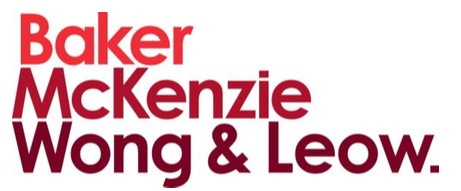23 September, 2018
In Neo Ah Luan v Public Prosecutor [2018] SGHC 188, the High Court of Singapore recently clarified the meaning of practising or doing any act 'as a medical practitioner' under Section 13 of the Medical Registration Act (Cap. 174) (MRA), as well as set out a sentencing framework for the various offences under Section 17(1) of the MRA.
The appellant in this case was a freelance beautician who performed dermal filler injections on customers from her home. She was not a qualified medical practitioner. In between 2012 and 2014, the appellant performed the procedure on two customers, one of whom complained of redness, inflammation and rashes on her face thereafter. The appellant subsequently faced two charges under Section 17(1)(e) of the MRA for practising medicine as an unauthorised person in contravention of Section 13 of the same act.
During the court proceedings, the Medical Devices Branch of the Health Sciences Authority (HSA) shared that the "Promoitalia Skinfill products" used by the appellant were not registered with the HSA as medical devices under the Health Products Act (Cap. 122D) (HPA). The supply of such unregistered products is generally prohibited under Section 15 of the HPA. The risks associated with such unregistered products generally is that their safety and performance would not have been previously assessed by the HSA and thus might not be labelled correctly, adequately sterilised and/or meet the applicable quality standards.
Further, it appeared that the dermal filler products used were classified as 'high risk' Class D medical devices because they were 'implantable medical devices designed for long-term use and were intended to be wholly or mainly absorbed by the human body'.
On the meaning of "as a medical practitioner"
While the appellant had pleaded guilty to the two charges and the appeal was only with regards to the sentences imposed, the court sought submissions from the parties as to whether the relevant offences were made out, particularly in light of the fact that the appellant never held herself out to be a medical practitioner.
In deciding the meaning of the phrases “practise as a medical practitioner” and “do any act as a medical practitioner” under Section 13(a) of the MRA, 2 interpretations were considered.
The first possible interpretation was that it meant "practising or doing acts while holding oneself out as, or assuming the identity of, a qualified medical practitioner", while the second possible interpretation was that of "practising or doing acts which should only be done by a qualified medical practitioner (e.g. performing procedures on patients)".
The Court held that the latter interpretation was preferable as such an interpretation is more in line with the wider purposes of the MRA, which is to protect the health and safety of the public.
Accordingly, the charges against the appellant were indeed made out, as she had carried out acts which should only be performed by qualified medical practitioners.
On sentencing
The court then went on to establish a four-step sentencing framework for the various offences under Section 17 of the MRA, as follows:
- First, identify the level of harm and the level of culpability;
- Second, identify the indicative sentencing range, according to a specific harm-culpability matrix in the judgment;
- Third, adjust the starting point according to offender-specific aggravating and mitigating factors that have not yet been considered in the analysis; and
- Fourth, make further adjustments to take into account the totality principle, particularly where an offender has been punished with three or more sentences of imprisonment.
In applying the framework to the facts of the case, it was held that the appellant’s offences amounted to a medium level of harm and culpability. Such a level corresponded to the starting point of about two months' imprisonment on the harm-culpability matrix. After giving mitigating weight to the fact that the appellant had pleaded guilty and cooperated with the authorities, the court eventually reached the conclusion that a sentence of six weeks' imprisonment for each charge was appropriate, and ordered for them to run concurrently.
Comments
The decision confirms the application of the MRA to the area of aesthetic services provided by non-medical practitioners, which was formerly a grey area. The case clarifies that such acts will be regulated as 'practising as a medical practitioner' under Section 13(a) of the MRA, even if a person does not hold himself or herself out to be a medical practitioner. This sends a clear message to beauty salons and non-medical practitioners that they cannot offer such aesthetic services that would be considered as acts of "practising as a medical practitioner", including injections of dermal fillers and other invasive procedures.
A copy of the full decision can be found here.
For further information, please contact:
Andy Leck, Principal, Baker & McKenzie.Wong & Leow
andy.leck@bakermckenzie.com





